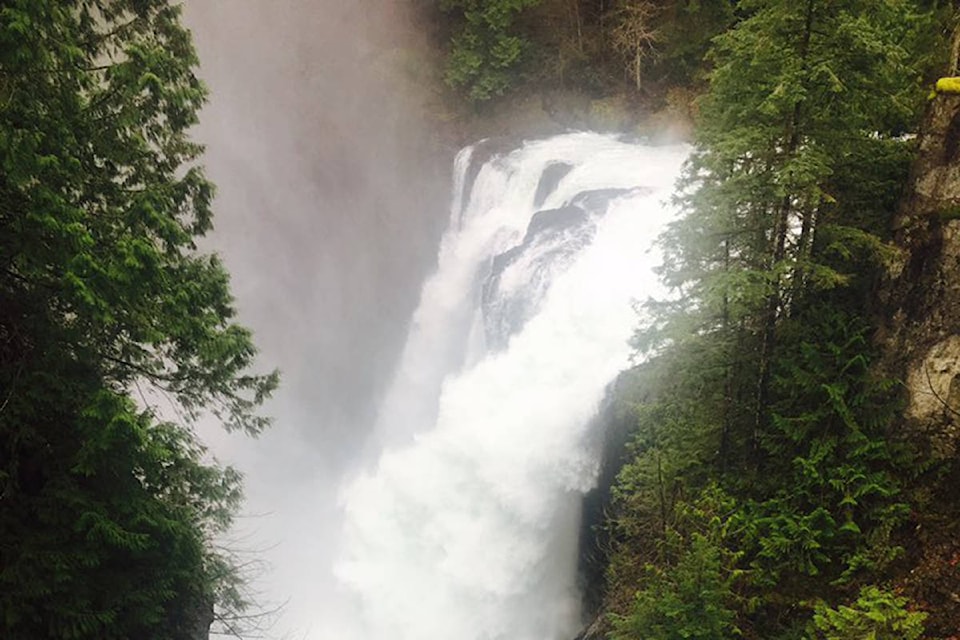There have been steady inflows into the Campbell River system from the eight storms that hit over a 12-day period to last Saturday, BC Hydro says.
“From the inflows, last Friday, we decided to increase the flow release down Elk Falls Canyon back up to 80 cubic metres squared (m3/s),” said BC Hydro spokesperson Stephen Watson. “This afternoon, as the weather looks to be relatively benign, we will reduce the flow down the canyon to about 40 m3/s. The total discharge down the Campbell River will move from about 205 m3/s to about 165 m3/s.
“We ask the public to continue to stay away from Elk Falls through the week.”
There is a potential atmospheric river type storm that could bring rain and warmer temperatures causing low elevation snowmelt on Saturday. There is much uncertainly on where the storm may track and hit the coast. There is a potential BC Hydro may end the extra water release down the canyon on Friday, if the storm misses the region, or the utility may continue the spill through the weekend. Temporary safety signage is in place and will be updated as needed.
The Upper Campbell Reservoir/Buttle Lake level is currently at 219.9 metres and slowly dropping, Watson says.
“It has hovered just below 220 m the past few days. The level we want to avoid is 222 metres. So still a decent amount of storage room. We see the reservoir level slowly dropping over the week, and the weekend will be dependent on the potential end-of-week storm.”
As a point of interest, Watson says, there was a very high storm surge last Thursday from the severe wind storm. The ocean surge was about 0.75 metres and the Quinsam River was flowing high at about 90 m3/s. BC Hydro reduced the flow through the powerhouse to the minimum for fish habitat and was only releasing about 80 m3/s, down from about 165 m3/s, for about three hours during the high tide. Even with that operational consideration, the river level came very close to over topping the bank near the Campbell River Lodge.
“There was close coordination that day with the City of Campbell River,” Watson says. “It was rare to see that much of an ocean storm surge.”
Last Thursday’s severe windstorm had a heavy impact on Vancouver Island with all the power outages. Hundreds of field personnel continue to work around-the-clock to repair the extensive damage to BC Hydro’s infrastructure after one of the most severe windstorms it has experienced in 20 years. Restoring remaining customers continues to be a challenge due to the extent of the damage. Hundreds of individual outages remain that crews have to attend to individually to make repairs, which includes restringing hundreds of spans of power lines, and replacing power poles and transformers.
For updates on the status of the restoration effort, please go here: https://www.bchydro.com/safety-outages/power-outages.html
